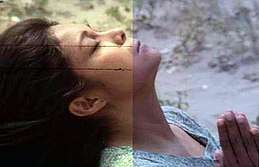ABS-CBN Film Restoration Project
ABS-CBN Film Restoration Project is a digital film restoration project of ABS-CBN in partnership with Central Digital Lab. The project is headed by Leo Katigbak of ABS-CBN Film Archives and Manet Dayrit of Central Digital Lab. The goal of the project is to digitally restore and remaster select Filipino films from the archives of ABS-CBN. Since the beginning of the project in 2011, the project has successfully digitized, restored, and remastered over one hundred Filipino films into a 1080p or 2K Digital Cinema Package format with a maximum resolution of 2048x1080 pixels at 24 frames per second. These films have been released through a wide array of platforms including limited theatrical runs, film festivals, free-to-air and cable television, DVDs, pay per view, and over-the-top content platforms such as iTunes.[1] All of the restoration process are done by Central Digital Lab in the Philippines with the exception of Kakabakaba Ka Ba? and Tatlong Taong Walang Diyos which were commissioned by ABS-CBN to be restored abroad by L’Immagine Ritrovata in Bologna, Italy and was supervised by Davide Pozzi. All copyrights to the films restored and remastered are owned in perpetuity by ABS-CBN Corporation.[2]
Restoration process
The first stage of the process is the scanning of the film negatives or prints into a digital picture and sound raw format. Depending on the film's condition, it may undergo a physical cleaning before the scanning could begin. The scanned materials will then undergo an automated and a painstaking frame by frame digital restoration process. The process involves the digital removal of dirt, scratches, fingerprints, discolorations, molds, tape marks, and other damages in the scanned materials. The process also involves the correction of color, brightness, and contrast into its original form often consulting the original cinematographers of each films whenever possible. Subtitles and watermarks, if present, are also remove in the process. The process also involves the restoration and remastering of sound. This involves the syncing of sound to the picture and the removal of unnecessary noises such as eradicate pops and whistles. Extreme measures were also done to remove copyrighted songs from some films. Dozens of technicians, engineers, and artists work hundreds of hours for each film with restoration cost ranging anywhere between twenty-five thousand pesos and ten million pesos per film.[3][4]
List of notable films restored

| Title | Year | |
|---|---|---|
| Year released | Year restored | |
| Himala | 1982 | 2012 |
| Oro, Plata, Mata | 2013 | |
| Ganito Kami Noon, Paano Kayo Ngayon | 1976 | |
| Nagalit ang Buwan sa Haba ng Gabi | 1983 | |
| Hindi Nahahati Ang Langit | 1985 | 2014 |
| Kapag Langit Ang Humatol | 1990 | |
| T-Bird at Ako | 1982 | 2015 |
| 1990 | ||
| 1980 | ||
| 1983 | ||
| 1983 | ||
| 1977 | 2016 | |
| 1983 | ||
| 1976 | ||
References
- ↑ Cruz, Marinel (14 April 2016). "Over 100 Filipino classic films restored". Inquirer.net.
- ↑ Don Jaucian (7 April 2017). "Rescuing the lost heritage of Philippine cinema". CNN Philippines.
- ↑ San Diego Jr., Bayani (5 August 2012). "Restoring 'Himala' - ABS-CBN Archives teams up with Central Digital Lab to save Bernal classic; next, 'Oro, Plata, Mata". Inquirer.net.
- ↑ Aimee Dacanay (4 August 2017). "The Art and Science of Film Restoration and How It's Saving Philippine Cinema". Spot.ph.
External links
- 2013. Classic Filipino films restored by ABS CBN Film Archives: Restoring our Films, Saving our Heritage. IASA
- Carmela Barbaza (2014). ABS-CBN Film Archives lists contributions for WDAVH 2014. SEAPAVAA
- Tessa Mauricio-Arriola (20 August 2015). Immortalizing Philippine cinematic classics. The Manila Times
- Don Jaucian (7 Apr 2017). Rescuing the lost heritage of Philippine cinema. CNN Philippines